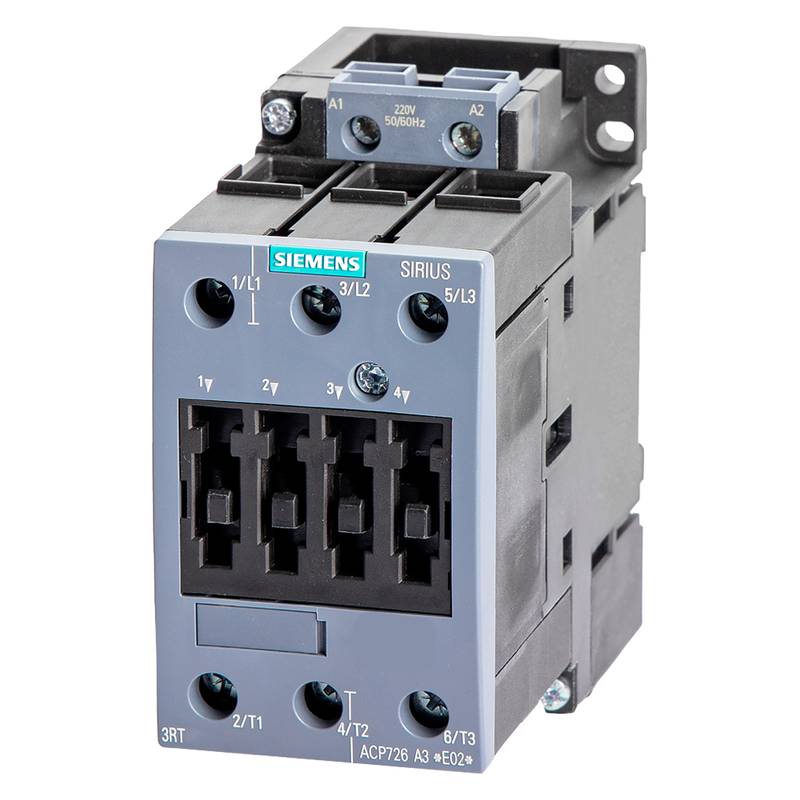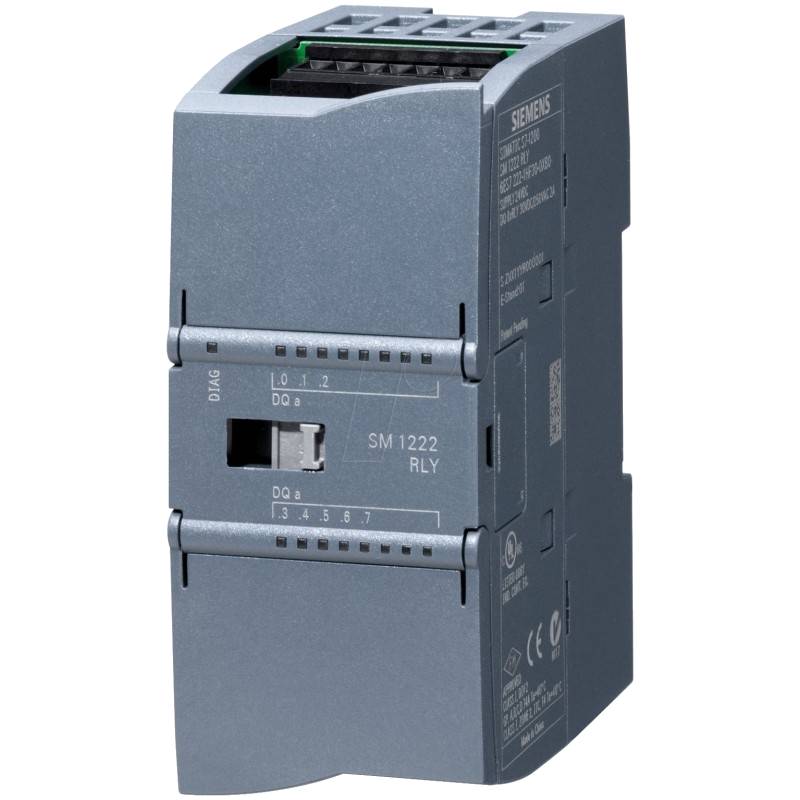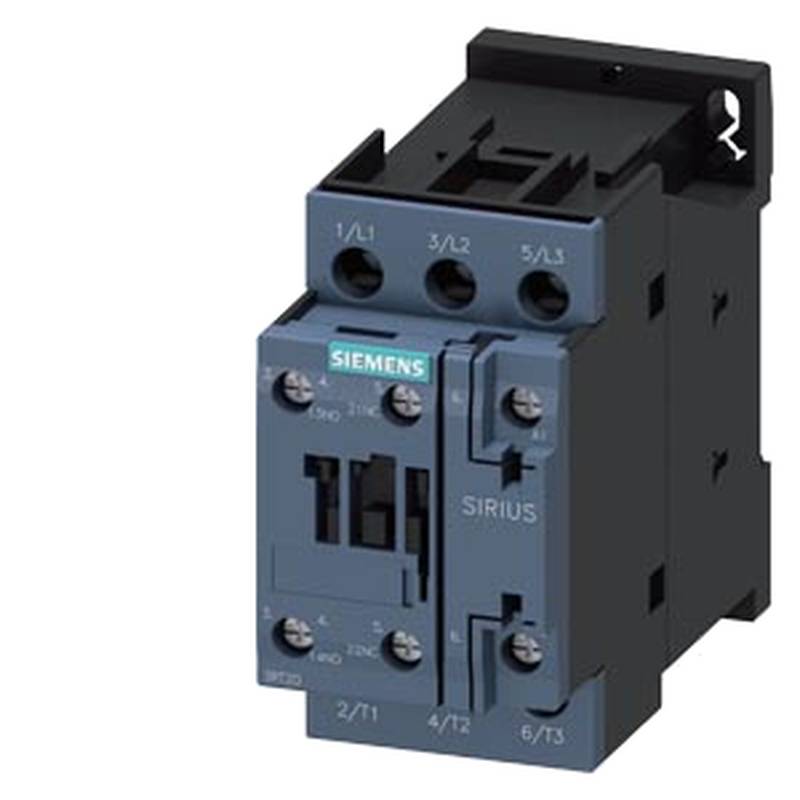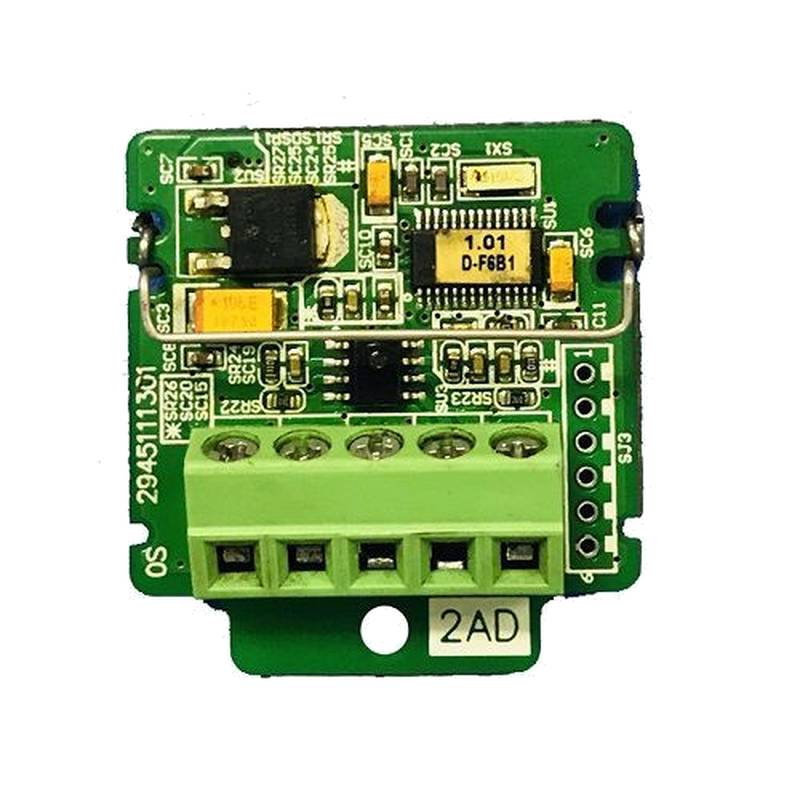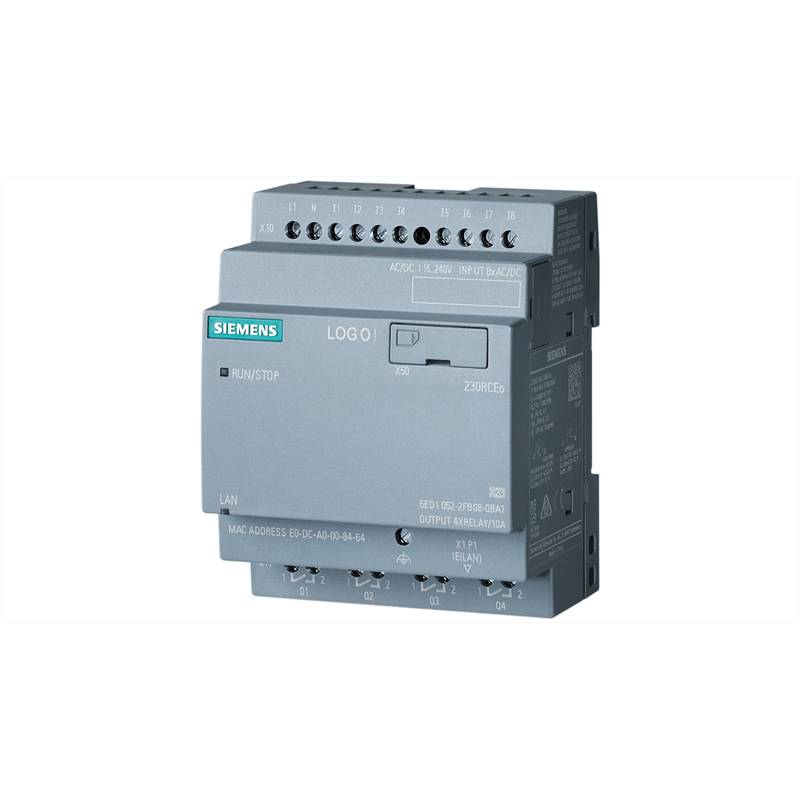
The Siemens 3RT5036-1AN20 is a robust 3-pole industrial contactor engineered for demanding applications, boasting a 50A continuous current rating and a 220VAC coil voltage. Its core advantage lies in its reliability and compact design, making it a preferred choice for motor control and power switching across various industrial sectors. Key technical parameters include a 3NO (Normally Open) contact configuration, a control circuit voltage of 220V AC at 50/60 Hz, and a rated insulation voltage of 690V. This Siemens contactor exemplifies Siemens' commitment to delivering high-performance, durable components for critical electrical infrastructure.
Product Specifications
| Feature | Specification |
| :----------------------- | :-------------------------- |
| Product Type | Standard Industrial Contactor |
| Model Number | 3RT5036-1AN20 |
| Number of Poles | 3 |
| Rated Operational Current | 50A |
| Control Voltage (Coil) | 220VAC |
| Auxiliary Contacts | 3NO (Normally Open) |
| Rated Insulation Voltage | 690V |
| Frequency | 50/60 Hz |
| Mounting Type | Rail Mount |
| Protection Class | IP20 |
Core Features & Market Positioning
The Siemens 3RT5036-1AN20 stands out due to its superior thermal stability and high switching capacity, ensuring long operational life even under frequent duty cycles. Its design prioritizes ease of installation and maintenance, featuring clear terminal markings and accessible connection points, which reduces downtime and labor costs for system integrators. In the competitive landscape of industrial contactors, Siemens differentiates itself by offering a product that balances robust performance with a compact footprint, allowing for space savings in control cabinets. The inherent reliability of Siemens components positions the 3RT5036-1AN20 as a dependable solution for mission-critical motor control circuits where failure is not an option.
Key Application Scenarios
This Siemens 3RT5036-1AN20 contactor finds extensive use in general-purpose motor control, particularly for starting, stopping, and reversing squirrel-cage motors in manufacturing plants. It is also integral to switching heating and cooling systems, managing power distribution boards, and controlling lighting circuits within industrial facilities. Sectors such as food and beverage processing, automotive manufacturing, and water treatment plants frequently specify this type of contactor for its consistent performance in diverse environmental conditions. End-users often search for solutions to reliably control loads up to 50A, making the 3RT5036-1AN20 a direct fit for these common industrial power management needs.
Practical System Integration Guidance
Integrating the Siemens 3RT5036-1AN20 involves straightforward wiring to the main power circuit and the 220VAC control coil. For motor control, it's typically wired in series with the motor and controlled by a control relay or PLC output. Ensure the control circuit voltage precisely matches the 220VAC rating to prevent damage. Proper grounding and adherence to local electrical codes are paramount during installation to guarantee safety and compliance. The rail-mount design facilitates quick assembly onto standard DIN rails within electrical enclosures.
Operation and Risk Mitigation
Safe operation of the Siemens 3RT5036-1AN20 necessitates ensuring the control circuit is de-energized before performing any wiring or maintenance. Overloading the contactor beyond its 50A rating can lead to premature failure and potential hazards. Users should verify that the coil voltage (220VAC) is correct for their application to avoid malfunction. While this model is designed for reliability, unexpected operational issues might arise from incorrect wiring, power surges, or environmental contaminants; consulting the official Siemens documentation for troubleshooting specific fault conditions is advised.
Scalability & Long-Term Value
The Siemens 3RT5036-1AN20 is part of Siemens' broad industrial automation portfolio, ensuring compatibility with other Siemens components and systems, such as programmable logic controllers (PLCs) and human-machine interfaces (HMIs). This inherent compatibility facilitates seamless integration into larger automation architectures and supports future expansion or upgrades. For facilities embracing Industry 4.0, contactors like the 3RT5036-1AN20 can be incorporated into smart control systems, enabling remote monitoring and diagnostics, thus enhancing operational efficiency and providing long-term digital value.
FAQs
What is the primary function of the Siemens 3RT5036-1AN20 contactor?
It acts as an electrically operated switch. It's designed to switch power circuits, most commonly for starting and stopping electric motors.
This contactor can handle significant electrical loads. It is rated for 50 amps, making it suitable for medium-sized industrial machinery.
Its coil operates on 220VAC, allowing for integration with standard industrial control voltages. It provides reliable on/off switching.
How do I wire the Siemens 3RT5036-1AN20 contactor for motor control?
Connect the main power supply to the input terminals (L1, L2, L3). The output terminals (T1, T2, T3) connect directly to the motor.
The 220VAC control coil needs a separate circuit. Terminals A1 and A2 receive the control voltage to energize the coil and close the contacts.
Ensure proper insulation and safety precautions. Follow local electrical codes and use appropriate wire gauges for the 50A rating.
What are the key benefits of using Siemens 3RT5036-1AN20 over other brands?
Siemens contactors are renowned for their exceptional durability and long service life. This reduces replacement frequency and maintenance costs.
The 3RT5036-1AN20 offers a compact design, saving valuable space in control cabinets. This is crucial in densely populated industrial panels.
It provides reliable performance even in harsh industrial environments. This ensures continuous operation and minimizes downtime risks.
Can the Siemens 3RT5036-1AN20 be used for DC loads?
This specific model, 3RT5036-1AN20, is designed for AC circuits, particularly 220VAC control coils. Using it for DC loads is generally not recommended and can lead to improper operation or damage.
DC circuits have different arc-quenching requirements compared to AC. Standard AC contactors may not effectively extinguish the arc when breaking DC current.
For DC applications, it is always best to select contactors specifically rated and designed for direct current loads. Consult Siemens' product catalog for DC-rated contactors.
What is the significance of the 3NO (3 Normally Open) configuration?
The "3NO" means the contactor has three sets of contacts that are open when the coil is de-energized. When the coil is energized, these three contacts close simultaneously.
This configuration is ideal for three-phase motor control. It allows for connecting all three phases of a motor to the power source through a single contactor.
The 3NO setup ensures that all power lines to the motor are connected or disconnected in unison, providing safe and effective power switching.
What is the maximum switching frequency for this contactor?
The Siemens 3RT5036-1AN20 is rated for a certain number of switching cycles per hour, depending on the load. For general-purpose motor loads, it can typically handle several thousand operations per hour.
Higher switching frequencies generally lead to a reduced mechanical and electrical lifespan. It's crucial to consult the datasheet for precise switching frequency limits based on the specific application's load type and current.
Operating the contactor within its specified limits ensures maximum longevity and reliability. Exceeding these limits can cause premature wear and failure.
How does the 220VAC coil voltage work with industrial control systems?
A 220VAC coil voltage is common in many industrial control panels. This voltage is readily available from standard power distribution systems in factories.
This coil voltage allows the contactor to be controlled by lower-power control signals from PLCs, relays, or pushbuttons. It acts as the interface between the low-power control and high-power switching.
When 220VAC is applied to the coil terminals (A1/A2), it creates a magnetic field that pulls the armature, closing the main power contacts.
What are common troubleshooting steps if the Siemens 3RT5036-1AN20 fails to engage?
First, verify that the 220VAC control voltage is correctly applied to the coil terminals (A1 and A2). Check fuses or breakers in the control circuit.
Inspect the wiring for any loose connections or damage. Ensure the contactor is not physically obstructed and that the coil itself has not failed (e.g., open circuit).
If the coil is energized and the contactor still does not engage, there might be an internal mechanical issue or a shorted coil. Replace the unit if the coil is found to be faulty.
What environmental conditions should be avoided for optimal performance?
Avoid operating the contactor in environments with excessive dust, moisture, or corrosive gases. These contaminants can degrade the contact surfaces and internal components.
High ambient temperatures can affect the contactor's performance and lifespan. Ensure the operating temperature stays within the specified range indicated in the product manual.
Avoid situations with significant vibration or shock, as this can lead to mechanical stress or unintended contact switching. Proper mounting is essential to mitigate these risks.
Does this contactor support remote monitoring or IIoT integration?
While the basic 3RT5036-1AN20 model doesn't have built-in smart features, it can be integrated into IIoT systems. This typically involves adding auxiliary contact blocks or external smart monitoring modules.
These add-ons can provide feedback on the contactor's status (open/closed) and operating parameters. This data can then be transmitted to a PLC or SCADA system for remote monitoring.
By connecting it to an industrial network, you can incorporate its operational data into a broader digital twin or predictive maintenance strategy.














